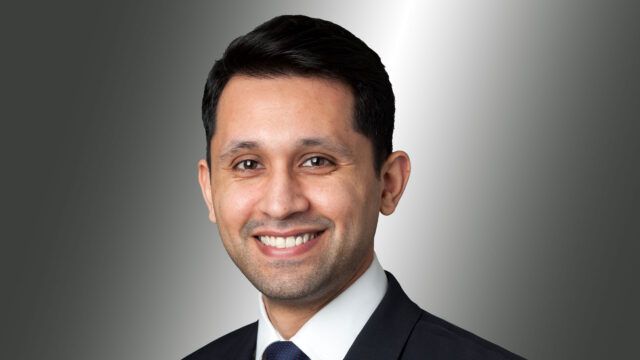Investment grade and high yield credit spreads across the US and Europe are trading at historically tight levels, whereas emerging market corporate credit spreads are trading within their long-term averages.
“So from that point of view, because investors compare EM to global markets, EM still offers quite a lot of juice,” said Siddharth Dahiya (pictured), head of emerging market corporate debt at abrdn.
“Compared to other markets, the spread differential actually is quite high and we think that probably should converge,” he told FSA in an interview.
But whether investors are being adequately compensated for risk is up for debate since developed markets appear to be headed for a soft landing and immaculate disinflation.
Siddharth however is optimistic about the fundamentals for EM credit despite a potentially less attractive macroeconomic backdrop for emerging market corporates.
“Companies have done a very good job in improving their balance sheets in the last five years, so the actual fundamental risk is fairly low,” he said.
“Even in periods of really distressed markets EM companies never really started defaulting because there was no access. These companies generally have very good access to other forms of financing.”
He added: “In the high yield portion of the EM market is where we see more juice than the IG market; that is where the spread differential is higher.”
An arbitrage opportunity
Although from a bottom-up perspective, while certain EM corporates exhibit strong balance sheets and fundamentals, Siddharth said issuers in Latin America are currently the most interesting.
“If you look historically, country risk tends to be the biggest driver of returns in the EM corporate space,” he said.
“The same sector can show very different dynamics in different countries, but different sectors in the same country can move together,” he explained.
As such, Latin America is where he is seeing the best opportunities for EM corporate credit.
He said: “The overall supply from Latin America is shrinking, so the universe is becoming more scarce.”
“Fundamentally, these companies have improved their balance sheets over the last few years, quite significantly in some cases, and yet spreads are more attractive.”
Additionally, he noted how companies in Latin America often have their credit rating constrained by that of the sovereign of their country.
“Generally rating agencies will not rate you higher than the sovereign,” he said. “A number of Latin America countries are sub-investment grade, but the companies are very high quality.”
“So even though you have a very strong investment grade balance sheet, if you happen to be in a BB- country, you are constrained.”
“So, when we invest in these companies, we know that we are investing in a very strong balance sheet but we are getting paid like a BB company – that to us is a very interesting arbitrage, which is not available in large parts of Asia.”
The reason these opportunities aren’t available in large parts of Asia is because many of the sovereigns are generally highly rated.
Indeed, Siddharth said that some Singaporean or Korean companies for example may not have balance sheets which are highly rated but have their credit ratings lifted by their country’s sovereign rating.
US dollar exceptionalism isn’t ending
For many global investors however the strength of the US dollar for the past decade would have hurt returns for local currency emerging market debt.
One popular view in the market is that now could be the time for local currencies to start appreciating as the US dollar starts to end its cycle of ‘US exceptionalism’.
However, Siddharth said that does not appear to be happening due to the strength of the US economy amidst high interest rates.
One other aspect of strengthening local EM currencies however is the interest rate story, which he believes “has some legs” since as inflation starts to cool off globally, EM central banks will have some room to start cutting which should be positive.
“Allocation to emerging market corporate credit in global portfolios is on the lower side,” he said. “So from a demand perspective, it’s very clean asset class at the moment.”

















